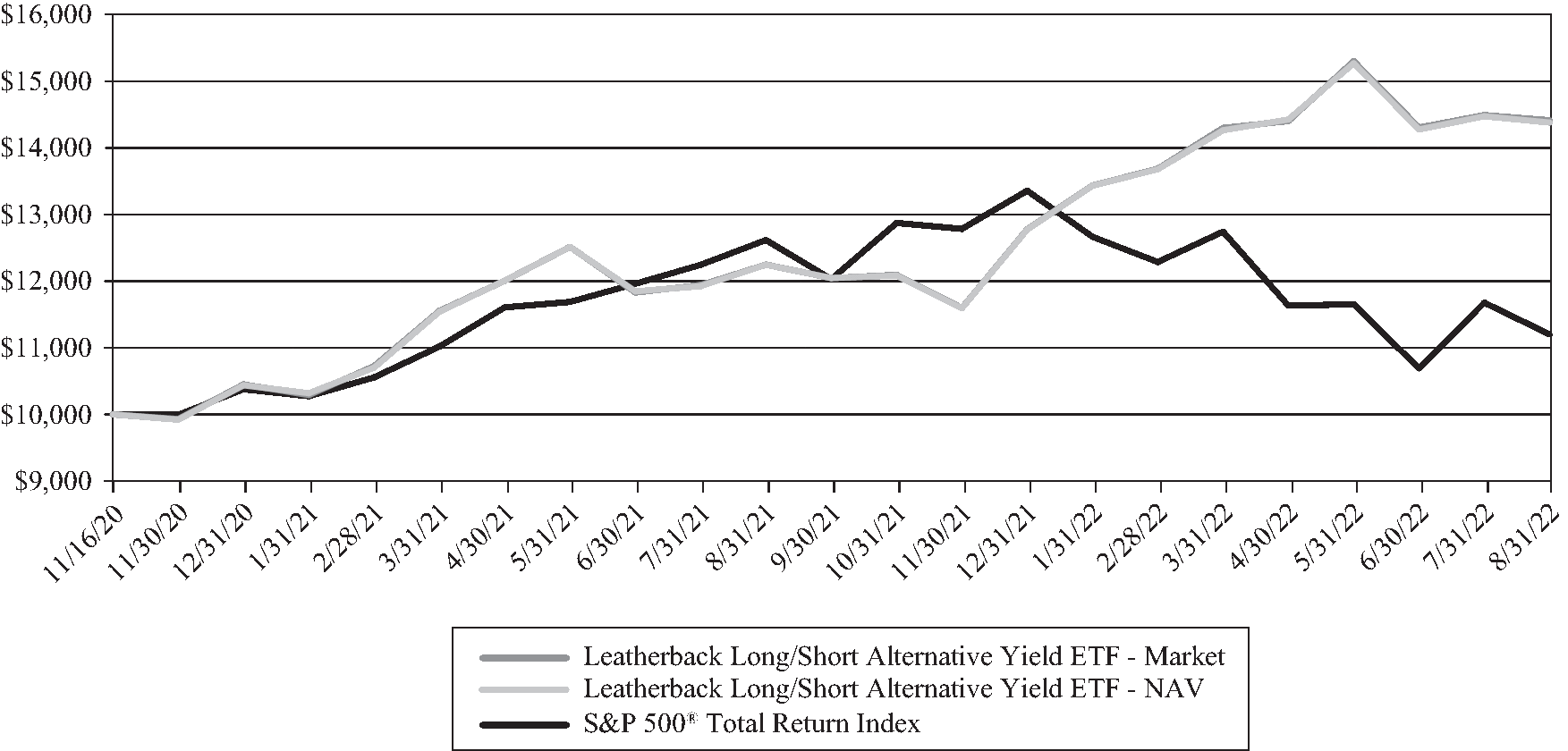hardship higher prices were causing. This round of the Zero/Near-Zero-Interest-Rate policy regime appeared to be drawing to its conclusion, as U.S. Treasury yields rose higher and more quickly than most had foreseen, 3%, which was unthought of by many market participants less than six months earlier, had become a reality in some Treasury maturities. Broader U.S. Equity markets were suffering one of their worst performance starts to a year. We thought the markets at large were becoming increasingly reactive, price discovery had returned, and the adage “Don’t Fight the Fed” became important advice to heed. It appeared depleted savings, higher debt levels, and increasing costs of borrowing would be important drivers of what may lie ahead.
•The third quarter through August 2022 began what we think is the culmination of everything we have outlined above. The latest interest rate regime appears to have ended, and the Fed is doing what it can to make the message clear. Both fixed income and equity markets reacted, and turbulence was here, at least for the moment. Shares of what we view as lower quality companies saw a rally, but we thought this would be temporary as we may be in the midst of a bear market, and even a recession. We opined that the market setup was different from over the past decade, and that interest rates would be higher, and remain there longer, than markets were discounting. We made a call of higher inflation, a consumer that may be on the ropes, and possible corporate profit margin compression. Finally, we wondered if the realization that the bull market status quo may have disappeared had fully set in.
These themes have led to opportunities in both the long and short space. Presently, we maintain several long positions that we view as attractively valued on both an absolute and relative basis. These names also generate income via dividends, many of which we believe have opportunities to grow these payouts. With the significant decline in valuations broadly across equities, we anticipate the coming months and year could produce a constructive set-up to upgrade our portfolio with high shareholder yielding equities. On the short side of the book, we maintain shorts in high valuation companies with, in our opinion, limited prospects to near-term profitability. The short side of the book has produced significant profit contributors with several names declining in value by 50% or more during the fiscal year. While we do not expect a repeat performance of the past fiscal year, we do observe many short candidates that could prove profitable over the next year. As we wrap up the month of August 2022, we want to thank our corporate and investor partners. We look forward to future dialogue and working together to continue changing the game.
For any questions about the Fund please reach out to us at (833) 417-0090. You may also visit our website at www.leatherbackam.com or reach us via email at info@leatherbackam.com.
Leatherback Asset Management
Before investing you should carefully consider the Fund’s investment objectives, risks, charges and expenses. This and other information is contained in the Fund’s prospectus. The Fund’s prospectus may be obtained by visiting leatherbackam.com. Please read the prospectus carefully before you invest.
Investing involves risk, including the loss of principal.
Past performance does not guarantee future results.
A fund’s net asset value (“NAV”) per share is the sum of all its assets less any liabilities, divided by the number of shares outstanding. The market price is the most recent price at which the fund was traded.
As with all exchange-traded funds, Fund shares may be bought and sold in the secondary market at market prices. The market price normally should approximate the Fund’s NAV per share, but the market price sometimes may be higher or lower than the NAV. The Fund is newer with a limited operating history. There are a limited number of financial institutions authorized to buy and sell shares directly with the Fund; and there may be a limited number of other liquidity providers in the marketplace. There is no assurance that Fund shares will trade at any volume, or at all, on any stock exchange. Low trading activity may result in shares trading at a material discount to NAV.
“Long” and “short” are investment terms used to describe ownership of securities. To buy securities is to “go long.” The opposite of going long is “selling short.” Short selling is an advanced trading strategy that involves selling a borrowed security. Short sellers make a profit if the price of the security goes down and they are able to buy the security at a lower amount than the price at which they sold the security short.
The S&P 500® Total Return Index is an index of 500 large-capitalization companies selected by Standard & Poor’s Financial Services LLC.
Since the Fund is actively-managed it does not seek to replicate the performance of a specified index. The Fund therefore may have higher portfolio turnover and trading costs than index-based funds. The Fund may invest in other funds, and in so doing will incur the expenses and risks of those funds.
The Fund uses short sales and derivatives (forwards, futures, swaps, and options), both of which may involve substantial risk. The loss on a short sale is in principle unlimited since there is no upward limit on the price of a shorted asset. The potential loss from a derivative may be greater than the amount invested due to counter-party default; illiquidity; or other factors. The Fund may hold illiquid assets (e.g., certain business development companies), to the extent permitted under the Investment Company Act of 1940, as amended, which may cause a loss if the Fund is unable to sell an asset at a beneficial time or price.
The Fund is distributed by Foreside Fund Services, LLC.

